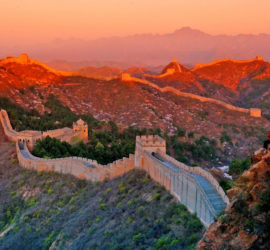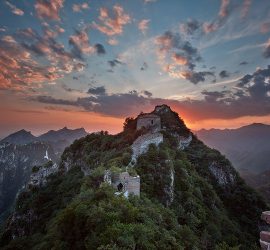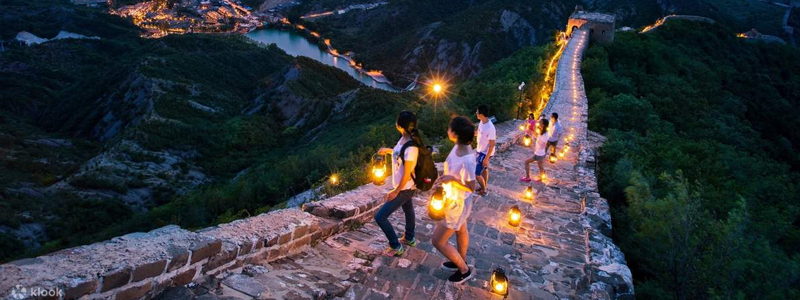Mutianyu greatwall
Situated in Beijing’s Huairou District at least 73 km from Beijing, Mutianyu Great Wall is one of the most symbolic parts of the great wall and among the 16 newest tourists’ attractions in Beijing. Having a unique construction with densely located watchtowers, Mutianyu has famous sections such as Ox Horn Edge, Jiankou, and Ying Fei Dao. While it was built in the Northern Qi Dynasty it was later restored to the Ming Dynasty. Today, it’s perhaps the best construction quality and the most preserved section.
Features
Constructed mainly in granite, Mutianyu Great Wall is 4-5 meters wide and 7-8 meters wide. As compared to other parts of the wall, it has some very unique characteristics in its built. Some of its most notable features include
· With over 22 watchtowers, its watchtowers are densely populated.
· Both its inner and outer parapets are designed with merlons hence shots can be fired to the enemy from both sides.
· The Mutianyu Pass has 3 watchtowers with 1 big one and 2 small ones on both sides.
· It has a large area of vegetation which cannot be compared to any other area of the wall.
Tourists feature and the best time to visit
As the longest and the best restored great wall section, Mutianyu is one of the best places for tourists to visit. Apart from having better architecture than other parts of the wall, it’s also less crowded. In addition, there are very many cables cars that you can use to access it. With the cypresses and the greens of pines covering over 90% of the area, it’s beautiful throughout the year.
If you want to visit this place then the best time is during the autumn and spring. During winter, it’s not only chilly but also has slippery walls. However, you need to avoid visiting it during china’s major holidays when it’s likely to be packed with many tourists.
Summer Palace:
The creation of the Summer Palace came about through the Jin Dynasty emperor Wányán Liàng and the moving of his capital to the area. Since this time, around the mid-1100s, various buildings and gardens have been created with Longevity Hill receiving its name from the Qianlong Emperor who commissioned work on the imperial gardens that sit on the hill in 1749 to commemorate his mother’s 60th birthday.
The area is now a public park, having been opened as such in 1924, and continues to attract an abundance of visitors both from China and the rest of the world.
A number of impressive buildings make up the Summer Palace with many sat on Longevity Hill;Buddhist Virtue Temple . Sea of Wisdom Temple and Dispelling Cloud Hall are just a few. This Palace is divided into three different areas, each consisting of its own individual function. These functions include political and administrative activities, residences, and recreation and sightseeing, making its huge scale more manageable for those who come to the site.
The Summer Palace claimed UNESCO World Heritage List status in 1998 with its masterpiece of Chinese landscape garden design being one of the features to be highly praised by the United Nations. The stark contrast of the imperial gardens with its incredible aspects of natural wonder juxtaposed with some amazing feats of engineering and manmade features make it a place of ‘outstanding aesthetic value’ that will continue to attract many visitors for years to come.
Having been first built in 1750 and suffered immense damage as a result of the war in 1860, the gardens also support a contrast of complete peace and tranquillity as well as a memory of conflict and less prosperous times. For these reasons, the Summer Palace with its Longevity Hill is a fantastic place to visit during a stay in China, whether as part of a tour or by yourself.









